Traduzione generata automaticamente
Mostra originale
Mostra traduzione
Artist: Pablo Picasso (after) Medium: lithograph, Arches paper Portfolio: Le Goût de Bonheur Year: 1970 Edition: Total of 1998 copies (666 each in German, French and English) Sheet Size: 13'' x 10'' It was produced under the direct supervision of Pablo Picasso Excellent Conditions Picasso - Le Gout Du Bonheur - A Suite Of Happy, Playful And Erotic Drawings - This is the sole edition of re-creations that will ever be made of these unpublished drawings - three publishers have collaborated in its creation - the porfolios have been numbered from 1 to 666. Picasso is not just a man and his work. Picasso is always a legend, indeed almost a myth. In the public view he has long since been the personification of genius in modern art. Picasso is an idol, one of those rare creatures who act as crucibles in which the diverse and often chaotic phenomena of culture are focussed, who seem to body forth the artistic life of their age in one person. The same thing happens in politics, science, sport. And it happens in art. Early life Born in Malaga, Spain, in October of 1881, he was the first child born in the family. His father worked as an artist, and was also a professor at the school of fine arts; he also worked as a curator for the museum in Malaga. Pablo Picasso studied under his father for one year, then went to the Academy of Arts for one year, prior to moving to Paris. In 1901 he went to Paris, which he found as the ideal place to practice new styles, and experiment with a variety of art forms. It was during these initial visits, which he began his work in surrealism and cubism style, which he was the founder of, and created many distinct pieces which were influenced by these art forms. Updates in style During his stay in Paris, Pablo Picasso was constantly updating his style; he did work from the blue period, the rose period, African influenced style, to cubism, surrealism, and realism. Not only did he master these styles, he was a pioneer in each of these movements, and influenced the styles to follow throughout the 20th century, from the initial works he created. In addition to the styles he introduced to the art world, he also worked through the many different styles which appeared, while working in Paris. Not only did he continually improve his style, and the works he created, he is well known because of the fact that he had the ability to create in any style which was prominent during the time. Russian ballet In 1917, Pablo Picasso joined the Russian Ballet, which toured in Rome; during this time he met Olga Khoklova, who was a ballerina; the couple eventually wed in 1918, upon returning to Paris. The couple eventually separated in 1935; Olga came from nobility, and an upper class lifestyle, while Pablo Picasso led a bohemian lifestyle, which conflicted. Although the couple separated, they remained officially married, until Olga's death, in 1954. In addition to works he created of Olga, many of his later pieces also took a centralized focus on his two other love interests, Marie Theresa Walter and Dora Maar. Pablo Picasso remarried Jacqueline Roque in 1961; the couple remained married until his death 12 years later, in 1973. Work as a pacifist Pablo Picasso was a pacifist, and large scale paintings he created, showcased this cry for peace, and change during the time. A 1937 piece he created, after the German bombing of Guernica, was one such influential piece of the time. Not only did this become his most famous piece of art work, but the piece which showed the brutality of war, and death, also made him a prominent political figure of the time. To sell his work, and the message he believed in, art, politics, and eccentricity, were among his main selling points. Conflicting with social views Many things Pablo Picasso did during the 1950s, conflicted with the general public. Viciousness towards his children, exaggerated virility towards women, and joining the Communist party, were some of the many scandals which he was involved in during his lifetime. Although most of the things he did were viewed negatively by a minority of the general public, admirers of Pablo Picasso turned a blind eye, and still accepted him as a prominent figure in their society. Following the end of WWII, Pablo Picasso turned back towards his classic style of work, and he created the ''Dove of Peace.'' Even though he became a member of the Communist party, and supported Stalin and his political views and rule, Pablo Picasso could do no wrong. In the eyes of his admirers and supporters, he was still a prominent figure, and one which they would follow, regardless of what wrongs he did. He was not only an influence because of the works he created, but he was also an influential figure in the political realm. Influence outside of art Although Pablo Picasso is mainly known for his influence to the art world, he was an extremely prominent figure during his time, and to the 20th century in general. He spread his influences to the art world, but also to many aspects of the cultural realm of life as well. He played several roles in film, where he always portrayed himself; he also followed a bohemian lifestyle, and seemed to take liberties as he chose, even during the later stages of his life. He even died in style, while hosting a dinner party in his home. Collection of work Pablo Picasso is recognized as the world's most prolific painter. His career spanned over a 78 year period, in which he created: 13,500 paintings, 100,000 prints and engravings, and 34,000 illustrations which were used in books. He also produced 300 sculptures and ceramic pieces during this expansive career. It is also estimated that over 350 pieces which he created during his career, have been stolen; this is a figure that is far higher than any other artist throughout history. Sale of his works Pablo Picasso has also sold more pieces, and his works have brought in higher profit margins, than any other artist of his time. His pieces rank among the most expensive art works to be created; with a price tag of $104 million, Garson a la Pipe, was sold in 2004. Although he had a conflicting lifestyle, Pablo Picasso was admired by many, and was one of the most influential figures of his time. Not only during his life, but also after his death, he is still one of the most well known artists, and political figures, of his time. With thousands of pieces to his name, and art works which have been seen by millions, around the world, he has been a great influence to society, he has influenced the art world, and he introduced many new styles of art, which helped shape modern art, and modern styles artists follow today.
Artista: Pablo Picasso (dopo) Medium: litografia, carta Arches Portfolio: Le Goût de Bonheur Anno: 1970 Edizione: Totale di 1998 copie (666 ciascuna in tedesco, francese e inglese) Dimensioni del foglio: 13'' x 10'' È stato prodotto sotto la diretta supervisione di Pablo Picasso Condizioni eccellenti Picasso - Le Gout Du Bonheur - A Suite Of Happy, Playful And Erotic Drawings - Questa è l'unica edizione di ri-creazioni che sarà mai fatta di questi disegni inediti - tre editori hanno collaborato alla sua creazione - i portfolio sono stati numerati da 1 a 666. Picasso non è solo un uomo e la sua opera. Picasso è sempre una leggenda, anzi quasi un mito. Nell'opinione pubblica è da tempo la personificazione del genio nell'arte moderna. Picasso è un idolo, una di quelle rare creature che fungono da crogioli in cui si concentrano i diversi e spesso caotici fenomeni della cultura, che sembrano dare corpo alla vita artistica della loro epoca in una sola persona. La stessa cosa accade nella politica, nella scienza, nello sport. E succede nell'arte. Prima vita Nato a Malaga, Spagna, nell'ottobre del 1881, fu il primo figlio nato in famiglia. Suo padre lavorava come artista, ed era anche professore alla scuola di belle arti; lavorava anche come curatore del museo di Malaga. Pablo Picasso studiò sotto suo padre per un anno, poi andò all'Accademia delle Arti per un anno, prima di trasferirsi a Parigi. Nel 1901 andò a Parigi, che trovò come il luogo ideale per praticare nuovi stili, e sperimentare una varietà di forme d'arte. Fu durante queste visite iniziali, che iniziò il suo lavoro in stile surrealismo e cubismo, di cui fu il fondatore, e creò molti pezzi distinti che furono influenzati da queste forme d'arte. Aggiornamenti nello stile Durante il suo soggiorno a Parigi, Pablo Picasso aggiornava costantemente il suo stile; ha fatto lavori del periodo blu, del periodo rosa, dello stile influenzato dall'Africa, del cubismo, del surrealismo e del realismo. Non solo ha padroneggiato questi stili, ma è stato un pioniere in ognuno di questi movimenti, e ha influenzato gli stili da seguire per tutto il XX secolo, dalle opere iniziali che ha creato. Oltre agli stili che introdusse nel mondo dell'arte, lavorò anche attraverso i molti stili diversi che apparvero, mentre lavorava a Parigi. Non solo ha continuamente migliorato il suo stile e le opere che ha creato, ma è ben noto per il fatto che ha avuto la capacità di creare in qualsiasi stile che era prominente durante il tempo. Balletto russo Nel 1917, Pablo Picasso si unì al Balletto Russo, che era in tournée a Roma; durante questo periodo incontrò Olga Khoklova, che era una ballerina; la coppia si sposò nel 1918, al ritorno a Parigi. La coppia alla fine si separò nel 1935; Olga proveniva dalla nobiltà e da uno stile di vita di classe superiore, mentre Pablo Picasso conduceva uno stile di vita bohemien, che era in conflitto. Anche se la coppia si separò, rimasero ufficialmente sposati fino alla morte di Olga, nel 1954. Oltre alle opere che creò di Olga, molte delle sue opere successive si concentrarono anche sui suoi altri due interessi amorosi, Marie Theresa Walter e Dora Maar. Pablo Picasso si risposò con Jacqueline Roque nel 1961; la coppia rimase sposata fino alla sua morte 12 anni dopo, nel 1973. Lavoro come pacifista Pablo Picasso era un pacifista, e i dipinti su larga scala che ha creato, hanno mostrato questo grido di pace, e il cambiamento durante il tempo. Un'opera del 1937 che creò, dopo il bombardamento tedesco di Guernica, fu una di queste opere influenti dell'epoca. Non solo divenne la sua opera d'arte più famosa, ma l'opera che mostrava la brutalità della guerra e la morte, lo rese anche una figura politica prominente dell'epoca. Per vendere il suo lavoro e il messaggio in cui credeva, l'arte, la politica e l'eccentricità erano tra i suoi principali punti di vendita. In conflitto con le opinioni sociali Molte cose che Pablo Picasso fece durante gli anni '50, entrarono in conflitto con il grande pubblico. La cattiveria verso i suoi figli, la virilità esagerata verso le donne e l'adesione al partito comunista furono alcuni dei molti scandali in cui fu coinvolto durante la sua vita. Anche se la maggior parte delle cose che fece furono viste negativamente da una minoranza del pubblico generale, gli ammiratori di Pablo Picasso chiusero un occhio e lo accettarono ancora come una figura importante nella loro società. Dopo la fine della seconda guerra mondiale, Pablo Picasso tornò al suo stile classico di lavoro e creò la "Colomba della pace" Anche se divenne un membro del partito comunista, e sostenne Stalin e le sue opinioni politiche e il suo governo, Pablo Picasso non poteva sbagliare. Agli occhi dei suoi ammiratori e sostenitori, era ancora una figura di spicco, che avrebbero seguito, indipendentemente dai torti commessi. Non era solo un'influenza a causa delle opere che creava, ma era anche una figura influente nel campo politico. Influenza al di fuori dell'arte Anche se Pablo Picasso è conosciuto principalmente per la sua influenza sul mondo dell'arte, è stato una figura estremamente importante durante il suo tempo, e per il 20° secolo in generale. Ha diffuso le sue influenze nel mondo dell'arte, ma anche in molti aspetti della vita culturale. Ha interpretato diversi ruoli nel cinema, dove ha sempre ritratto se stesso; ha anche seguito uno stile di vita bohemien, e sembrava prendersi le libertà che voleva, anche durante le ultime fasi della sua vita. Morì anche con stile, mentre ospitava una cena a casa sua. Collezione di opere Pablo Picasso è riconosciuto come il pittore più prolifico del mondo. La sua carriera si è estesa su un periodo di 78 anni, in cui ha creato: 13.500 dipinti, 100.000 stampe e incisioni, e 34.000 illustrazioni utilizzate nei libri. Ha anche prodotto 300 sculture e pezzi di ceramica durante questa carriera espansiva. Si stima anche che più di 350 pezzi che ha creato durante la sua carriera, sono stati rubati; questa è una cifra che è molto più alta di qualsiasi altro artista nel corso della storia. Vendita delle sue opere Pablo Picasso ha anche venduto più pezzi, e le sue opere hanno portato in margini di profitto più elevati, di qualsiasi altro artista del suo tempo. I suoi pezzi sono tra le opere d'arte più costose da creare; con un prezzo di 104 milioni di dollari, Garson a la Pipe, è stato venduto nel 2004. Anche se aveva uno stile di vita conflittuale, Pablo Picasso fu ammirato da molti e fu una delle figure più influenti del suo tempo. Non solo durante la sua vita, ma anche dopo la sua morte, è ancora uno degli artisti più noti, e figure politiche, del suo tempo. Con migliaia di pezzi a suo nome e opere d'arte che sono state viste da milioni di persone in tutto il mondo, ha avuto una grande influenza sulla società, ha influenzato il mondo dell'arte e ha introdotto molti nuovi stili d'arte, che hanno contribuito a formare l'arte moderna e gli stili moderni che gli artisti seguono oggi.

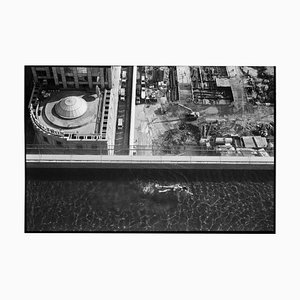

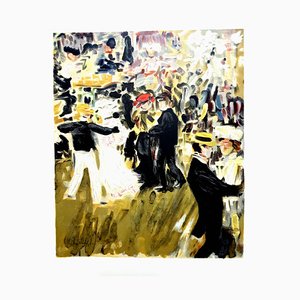

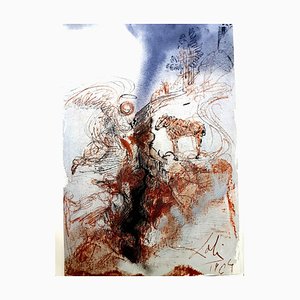
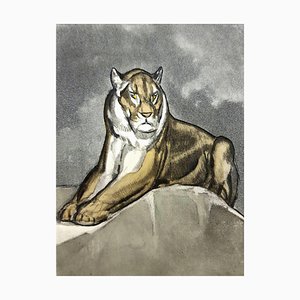
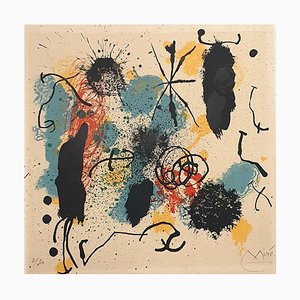
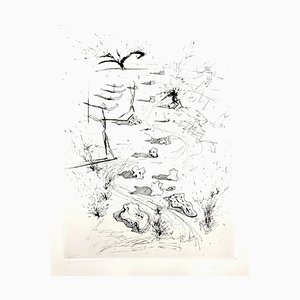
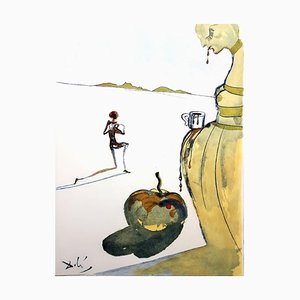
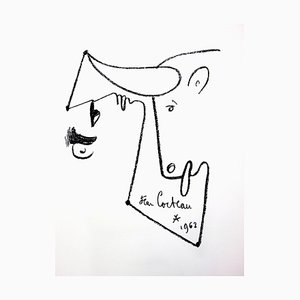
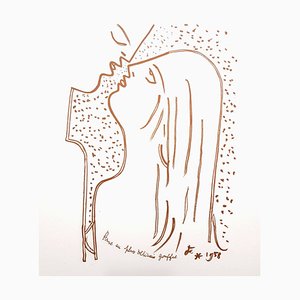
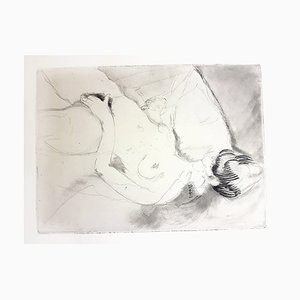
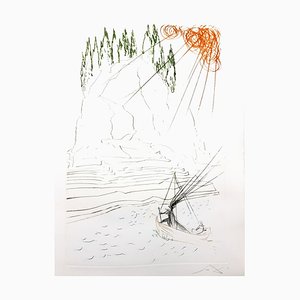

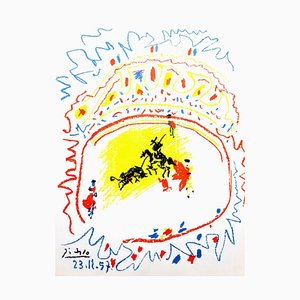
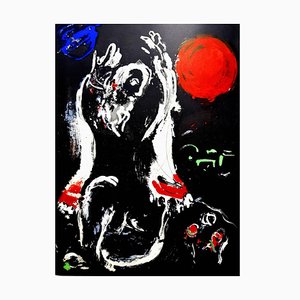
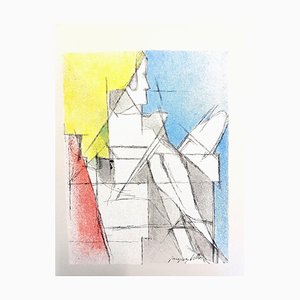
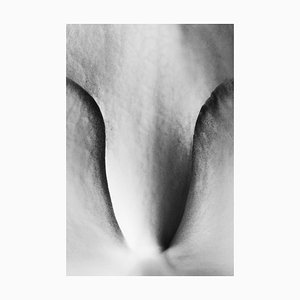
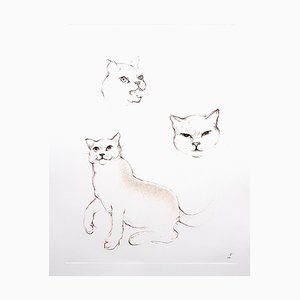
Contattaci
Fai un'offerta
Abbiamo notato che sei nuovo su Pamono!
Accetta i Termini e condizioni e l'Informativa sulla privacy
Contattaci
Fai un'offerta
Ci siamo quasi!
Per seguire la conversazione sulla piattaforma, si prega di completare la registrazione. Per procedere con la tua offerta sulla piattaforma, ti preghiamo di completare la registrazione.Successo
Grazie per la vostra richiesta, qualcuno del nostro team vi contatterà a breve.
Se sei un professionista del design, fai domanda qui per i vantaggi del Programma Commerciale di Pamono